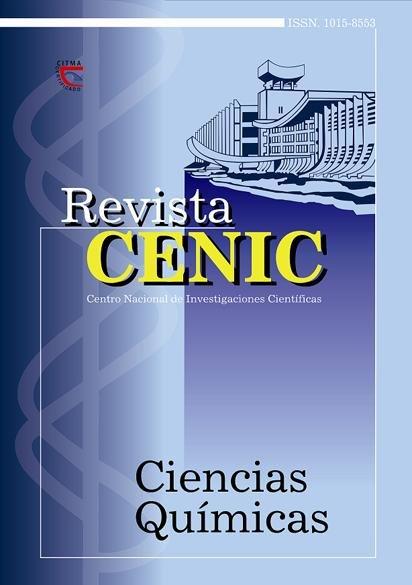New method for synthesis of triazolo[1,5-a]pyridines from N-[bis(methylthio)methylene]cyanoacetohydrazide and push pull systems
Abstract
The N-[bis(methylthio)methylen]cyanoacethydrazides derived from cyanoacethydrazide possess the structural requirements for the formation, in basic media of methylenic carbanions which make possible the synthesis of interesting heterocyclic systems with potential activity. On the other hand, it is known that the triazolo[1,5a]pyridines are very useful compounds as pharmaceutical agents for the treatment of several diseases. Their synthesis usually requires several steps and even in the most simple cases, good
yields could be not achieved. In this paper, the direct synthesis of new triazolo[1,5a]pyridines is described , which is advantageous in relation to the other methods reported. All reactions were carried out at room temperature using several basic media without satisfactory results. The best yields could be obtained by reflux temperature in presence of sodium ethoxide. Reaction mechanisms were proposed, which explain clearly the formation of these condensed heterocycles starting from the nucleophilic attack of the corresponding carbanion to the electrophilic C-atom of keten-S,S-acetals and dithiethane push pull systems. The best results were obtained with the former ethylenicones. The compounds synthesized were characterized through their quantitative elemental analysis and spectroscopic techniques (IR, 1H and 13C-NMR and mass spectrometry).

Downloads
Published
How to Cite
Issue
Section
License
Copyright (c) 2002 Copyright (c) 2002 Revista CENIC Ciencias Químicas

This work is licensed under a Creative Commons Attribution-NonCommercial-ShareAlike 4.0 International License.
Los autores que publican en esta revista están de acuerdo con los siguientes términos:
Los autores conservan los derechos de autor y garantizan a la revista el derecho de ser la primera publicación del trabajo al igual que licenciado bajo una Creative Commons Atribución-NoComercial-CompartirIgual 4.0 que permite a otros compartir el trabajo con un reconocimiento de la autoría del trabajo y la publicación inicial en esta revista.
Los autores pueden establecer por separado acuerdos adicionales para la distribución no exclusiva de la versión de la obra publicada en la revista (por ejemplo, situarlo en un repositorio institucional o publicarlo en un libro), con un reconocimiento de su publicación inicial en esta revista.
Se permite y se anima a los autores a difundir sus trabajos electrónicamente (por ejemplo, en repositorios institucionales o en su propio sitio web) antes y durante el proceso de envío, ya que puede dar lugar a intercambios productivos, así como a una citación más temprana y mayor de los trabajos publicados (Véase The Effect of Open Access) (en inglés).













